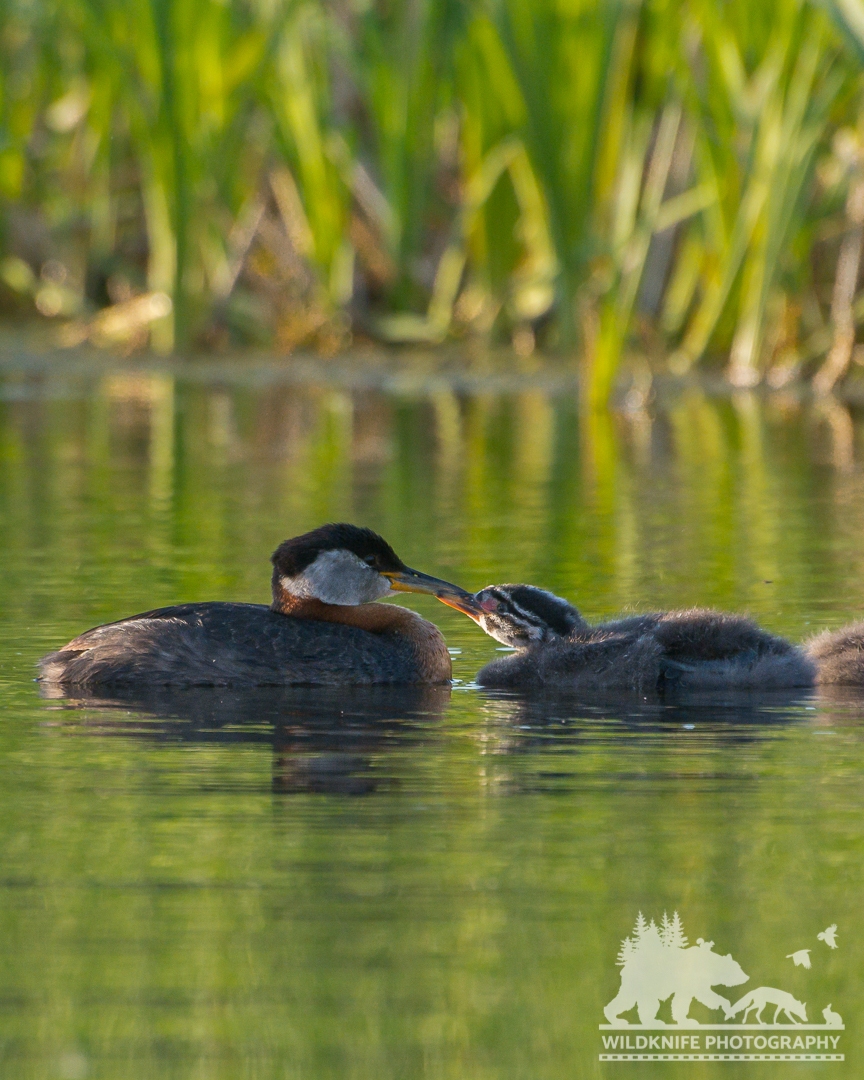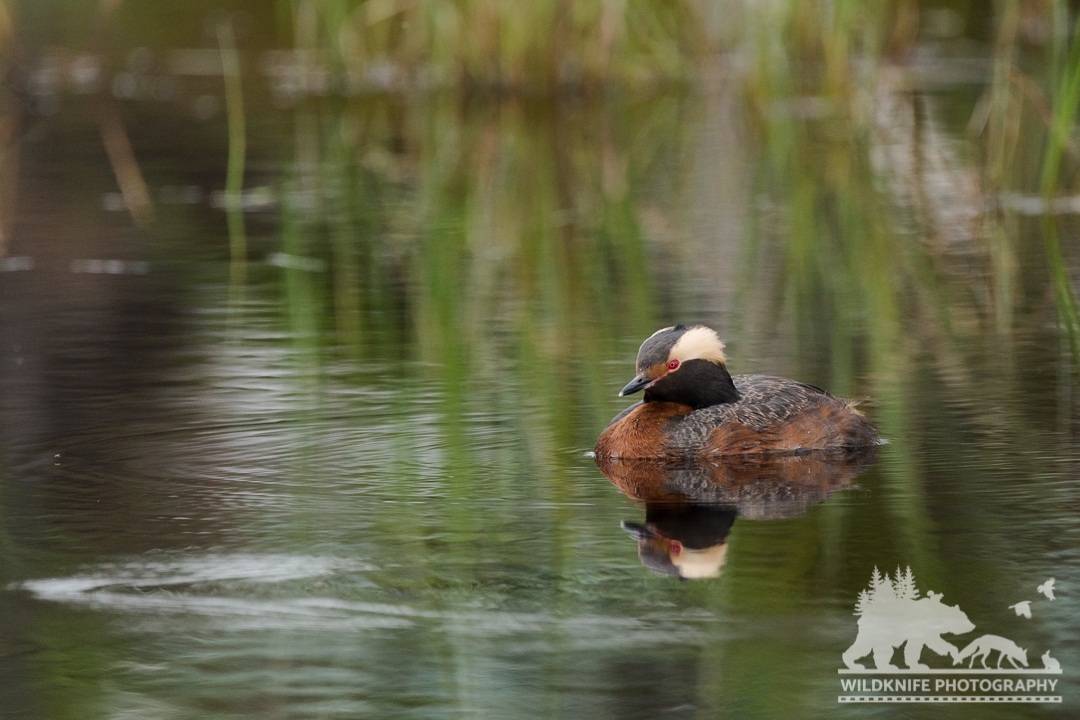This week I learned about two species of grebe. Loons were so fascinating that I wanted to learn more about the amazing skills of diving birds and since we have a couple of species of grebes that nest in Yellowknife, I thought they would be a great choice.
Red-necked and Horned grebes are the most common visitors to the NWT. Eared grebes are pretty rare but there are a few records of them in the southern parts of the Territory. I may do another post on them in the future because they are fascinating birds!!
Grebes form monogamous pairs, usually during stopovers on spring migration, as they begin to moult into breeding plumage during courtship. Most arrive at breeding grounds already mated and continue their ritualized displays, called “ceremonies,” which maintain their bond.
Male and female birds select a nest site together and both build the nest, incubate the eggs, and care for the young.
Grebe chicks climb onto their parents’ back, shortly after hatching and they spend most of their time riding around like that until they are 10 to 17 days old. Parents usually leave after the young are fully-fledged at about four weeks of age.
Grebes ingest large quantities of their own feathers. Their stomach retains two distinct masses (balls) of feathers but no one is quite sure what their purpose is. One possibility is that the feathers help protect the birds’ lower digestive tract from bones and other hard, indigestible materials. Grebes also feed its feathers to their young to get the “plug” started early.
Red-necked grebes flock together and migrate at night though they will sometimes migrate along the coast or over water during the day. Horned grebes migrate alone at night or over water and along the coast during the day.
The oldest recorded Red-necked Grebe was at least 11 years old when it was found in Minnesota, the same state where it had been banded.
Over 90% of the horned grebe’s breeding grounds are in Western Canadian wetlands and the ongoing destruction of marshes and waterways is threatening the survival of this species.
There is a small breeding population of horned grebes in Quebec’s Magdalen Islands that has existed for at least a century. Recent declines to its numbers which suggest may be as low as 15 adults on average have identified this distinct group as endangered.
The oldest recorded Horned Grebe was at least 5 years, 11 months old when it was recaptured and rereleased during banding operations in the Northwest Territories in 2007, the same place where it had been banded in 2002.
Thank you for reading I do appreciate your time. I hope you enjoyed learning about grebes as much as I have. Feel free to share with other bird lovers and I’ll see you back here next week.













